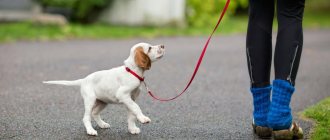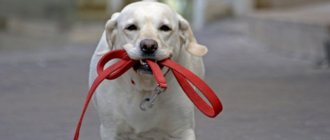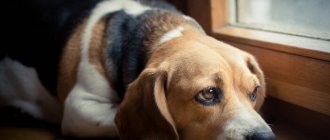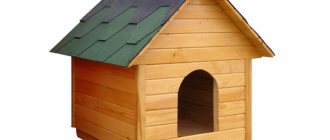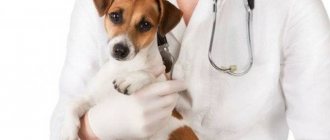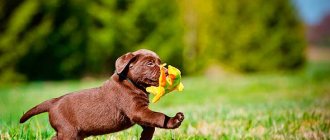Why does a puppy need walks?
During the walk, interpersonal connections between the dog and the owner are established. With proper organization of periods of activity and rest, the puppy receives the necessary physical activity, and its nervous system is formed.
Puppies
Important! Exercise should be a joy for the puppy. There is no point in forcing him to do something by force.
To prevent the dog from getting tired of walks, they need to be done more often, but shorter in time. After basic vaccinations, the frequency of walks should be at least 5 times a day.
Getting to know the outside world begins even before vaccination. True, it passes in the hands of the owner. Even this form brings positive results. Many owners neglect going out with their small pets. The main excuse is that there are a lot of infected animals on the street, although a lot of things get into your home with street shoes. In any case, the baby will come into contact with the brought infection. It might even get infected.
The difference between greenhouse dogs and actively walking dogs is that the latter gradually acquire immunity against any infection precisely on walks. Pets are deprived of this, so even a small dose of pest viruses can be dangerous for them. They get sick longer and more severely.
Walking a labrador puppy
The second point is that the pet dog does not learn social coexistence skills. Experience communicating with representatives of your class is acquired from 4 to 8 months. It is much easier for a puppy to learn to live in the city, not to be afraid of people, cars, noise, or other animals in an environment. The psyche of children is quite plastic.
A slightly older dog explores the world on walks. To prevent this process from getting out of control, the owner must plan walks wisely. If at first walking was carried out in quiet places, then gradually the pet should be introduced to busy areas.
Need to know ! It is important for your puppy to change routes regularly. The more knowledge he receives, the more adequately he will behave as an adult.
In order not to become an attachment to the leash, the pet must be given loads throughout the entire walk. Elements of training should be gradually introduced.
Walking is of no small importance in fulfilling the natural needs of the animal. This is especially important for large breeds. If dwarf representatives (Yorkie, Spitz, Chihuahua) can be allowed to walk in a diaper, large ones (Dachshund, Husky, German and East European shepherds, Labrador, etc.) should not be allowed to do this even at a tender age.
The dog needs to empty its intestines and bladder 3-4 times a day. They can tolerate it, but then problems arise with the genitourinary system. Long-term restraint leads to chronic diseases, for example, urolithiasis.
Swimming is very useful for the general development and strengthening of the dog’s physical condition. You can start doing this from the age of three months.
How are puppy vaccinations done?
First vaccination. In the first days of life, a newborn dog takes protection from its mother’s milk; the antibodies contained in the milk quickly eliminate vaccine strains and do not allow the baby’s immunity to fully strengthen. The initial vaccine is given when the baby reaches 8-9 weeks. At the indicated time, the dog’s antibody level is reduced.
A two-stage puppy vaccination scheme, or “Vaccination Schedule,” is used.
The first stage is the first vaccination, which is given to puppies at forty days. The puppy’s immunity is not formed at a young age; it is not recommended to vaccinate earlier than required. At six weeks there is a sharp decrease in the level of antibodies, and susceptibility to infectious diseases appears.
The second stage is a booster vaccination given after reaching eleven or twelve weeks. After the second vaccination, as after the first, two weeks pass until strong immunity is developed.
It is strongly recommended to adhere to a schedule that determines the health and well-being of your little pet.
When the vaccination stages are completed, the puppy’s body is too weakened and vulnerable to infections and diseases. After two weeks, the immune system becomes stable and strong. However, during this period it will be necessary to exclude walks outside the home; there are an excess of sources of infections on the street. It is not recommended to wash or expose the puppy to overheating, hypothermia, stressful conditions, overwork, physical activity and time-consuming transportation. Consider the important point - the incubation period is maintained after the first vaccination and after revaccination.
In order for the puppy to remain healthy and strong, two age-appropriate vaccinations are required to strengthen the immune system. The schedule is followed annually, revaccination is carried out once a year, repeating the procedure.
The neighbor claims that little puppies should not be outside until they are vaccinated. This is especially true for small breeds. And I have a Yorkshire terrier. He is one and a half months old. What really - you can’t walk him before vaccination?
At what age can you start walking puppies?
When can you take your puppy outside for walks after the first vaccination?
From birth to 1.5-2 months, puppies are protected by the mother's immunity. As long as they are with her, they are not in danger even when communicating with other animals. But immediately after weaning, the puppy becomes vulnerable. Without immunization, you should absolutely not go for walks with him.
Puppy vaccination
A two-month-old puppy receives the first mandatory vaccination (the second, if we count the optional one for parvovirus enteritis). Two weeks after it, if the pet feels well, you can start walking.
Important to remember ! After this vaccination, the pet does not yet have immunity against rabies. When planning your walking route, you need to take this fact into account. It is unlikely that it would be correct to walk him in places frequented by wild animals (fox, raccoon).
At first, you need to pay more attention to your pet’s well-being. If signs of discomfort are observed after a walk, walks should be suspended until the reasons are fully clarified.
There are general rules that need to be followed during the first time after vaccination:
- The optimal temperature for walking in winter is up to -10°C, in summer up to +30°C.
- Windless, calm place.
- In the first 7-10 days you should not be exposed to rain.
- During the first month, loads should be normalized. It’s better to walk more often, but not for long. Each time 20-25 minutes is enough.
Important ! You should not take the puppy out for a walk immediately after feeding.
It is very important to motivate your dog. While walking, he can be frightened by very simple objects and phenomena. It is important to show the pet that the owner is nearby and the danger is insignificant. Affectionate stroking and tasty treats will distract and calm him down. To keep the puppy from freezing, he should be constantly encouraged to move, but in a way that makes him happy.
Dog lovers need to understand that each of the components of a complex vaccine has its own time period for the onset of protection. Full protection occurs after the first mandatory vaccination within a week, with the exception of leptospirosis and rabies. Therefore, the doctor indicates the period after which immunity is developed against all the diseases listed in the complex.
As for walks until the end of quarantine (and generally after weaning), they can be continued if you are sure that:
- fenced area;
- has never been visited by other animals (or has undergone preventive treatment);
- well protected from the wind;
- illuminated by the sun.
Therefore, the decision on how long the dog cannot be walked after vaccination is made by the dog’s owner himself.
Restrictions after vaccination
The veterinarian will always explain why you should not walk your dog after vaccination at an early age. As already noted, the puppy’s immunity is still too weak, and the body is like a gateway for the entry of various diseases. In addition to general recommendations for limiting the puppy’s presence on the street, the owner must independently monitor the condition of his pet. If there are signs of incomplete recovery after vaccination (fever, lethargy, etc.), it is advisable to further limit the puppy’s contact with the outside world, for example, walk him in your arms. A veterinarian can help determine when a dog can walk without restrictions after vaccination, especially in cases where there are doubts about the animal’s full recovery after vaccination.
So after what vaccination can you walk your dog? This can usually be done after your annual vaccination. The only restrictions are to reduce contact with other animals on the street and avoid walking the dog in adverse weather conditions.
At what age are puppies vaccinated?
Is it possible to wash a dog after vaccination: after how long is it allowed?
From birth to one and a half months, puppies grow up breastfed. They receive all the necessary protective equipment from the vaccinated mother. After weaning, puppies require external protection. To do this, it is recommended to start vaccinating them from 6 weeks. The first vaccination is done in the nursery. It is not mandatory, but desirable. This is protection against parvovirus enteritis. For this purpose, one of the drugs is used: “Eurikan”, “Primo”, “Nobivak Pappy”, “Multican”.
First vaccination
Mandatory vaccinations begin no later than 8 weeks. The second (mandatory) vaccination is complex. It protects against:
- parvovirus enteritis;
- plague;
- infectious laryngotracheitis;
- infectious hepatitis;
- parainfluenza;
- leptospirosis.
If the nursery dispenses with the optional one, this complex one is considered the first.
At 3 months the third vaccination is indicated. The puppy needs it. It includes the entire composition of the second complex, but adds an anti-rabies component. By the way, annual revaccination against rabies is required.
If necessary (if the dog often suffers from infectious diseases), it is recommended to repeat the complex vaccination at 4 months, as with the third vaccination. This is the fourth immunization. It is optional and is carried out only according to medical indications.
Is it possible to walk a puppy after the first vaccination?
The cat has bleeding on the second day after giving birth
Ideally, the first vaccination is given at two months of age. It is preceded by deworming two weeks before. To be sure, deworming tablets are given twice a week apart.
Walks
Despite their simplicity, vaccinations cause enormous stress to the young body. He has to become infected with all the introduced strains and overcome them. Over time, the dog acquires stable immunity to those strains that were introduced from the outside. This entire process, which is accompanied by complications, takes time. The puppy will need at least two to three weeks to recover.
During quarantine, you can continue walking. But you should not let the puppy fall to the ground. It is necessary to protect him from any communication with other animals. Only after making sure that your pet has fully recovered can you proceed to regular walks.
Is it possible to walk a puppy after the second vaccination?
Regarding the question of when you can walk your puppy after the second vaccination, the conditions for the second vaccination do not differ from the first. Quarantine also lasts 2-3 weeks (3 weeks for rabies).
After a successful first vaccination, the young animal tolerates the second vaccinations more easily. In this sense, the post-vaccination period is easier. But this does not mean that there are no complications. The vaccination is an injection, so bumps will appear at the injection site. They need to be monitored. And the temperature will certainly rise.
Need to know ! Sometimes vaccination leads to allergic reactions. The procedure performed by a specialist guarantees the elimination of consequences. Therefore, you should not vaccinate yourself.
After the procedure (after 2 weeks), the specialist will definitely issue a certificate stating when and against what the vaccination was given. He will also tell you how many days after the second vaccination the puppy can go for walks. He will also clarify how much time you are allowed to walk in the first days.
What vaccinations does a puppy need to get?
The vaccination plan includes mandatory vaccinations against rabies, leptospirosis, canine distemper, enteritis and parainfluenza. In endemic areas, additional vaccinations against coronavirus enteritis and Lyme disease are possible.
Doctors follow approximately the following schedule:
- at 1.5-2 months – first vaccination (nobi-vak DHP+L);
- 10-14 days after the 1st vaccination - second vaccination (nobi-vak DHPPi+RL);
- at approximately 6-7 months (after a complete change of teeth) - the third vaccination (nobi-vak DHPPi+R+L) with the addition of a rabies vaccine;
- in 12 months after the third vaccination (or a year) - the fourth and subsequent vaccinations (nobi-vak DHPPi+R+L).
Subsequently, the adult dog is vaccinated annually.
Important! After the first vaccination, the puppy is not allowed to walk. After the second, exercise is allowed after 10-15 days. After the remaining vaccinations, you can go for walks, but reduce physical activity on your pet.
10 days before the first, third and fourth vaccinations, the puppy is given anthelmintic suspensions/tablets, for example, drontal plus (1 tablet per 10 kg of weight) or milbemax.
Lyme disease
Vaccination is carried out in certain regions, where the causative agent of borreliosis affects up to 20% of ticks . Not all dogs react to Borrelia - 10% show no visible symptoms. Others experience the disease acutely: their musculoskeletal system and internal organs are affected.
Parainfluenza
This viral infection settles in the upper respiratory tract and penetrates there through airborne droplets. As a rule, unvaccinated puppies up to 1 year old get sick, demonstrating good recovery dynamics. Mortality from parainfluenza is extremely rare.
Immunization is carried out at the age of 8 and 12 weeks using a polyvalent vaccine.
Leptospirosis
This bacterial infection (transmitted by rodents, domestic and game animals) has an increased mortality rate (up to 90%). The disease affects small vessels, causes acute intoxication and, as a result, malfunction of the most important organs.
Vaccination against leptospirosis is routine. It is given to 2-month-old puppies, including in a comprehensive vaccination. Sometimes monovaccines “Biovac-L” or “Nobivac Lepto” are used.
Carnivore plague
This viral infection has a high mortality rate, reaching 60–85%. Distemper is characterized by fever, inflammation of the mucous membranes, pneumonia, damage to the nervous system and gastrointestinal tract.
Is contact with other puppies allowed?
During quarantine, communication with other puppies is not recommended. It's another matter if they are from the same litter and vaccinated at the same time.
Puppies
For the first and second vaccinations of a puppy, the quarantine period is at least 2 weeks. When immunized against rabies, this period is extended to 3 weeks.
The following rules must be followed:
- walk exclusively with a puppy in your arms;
- avoid walking areas of other dogs;
- no bathing;
- Avoid contact with street shoes and door mats.
Rules for walking a puppy without vaccinations
They are dictated by common sense and do not need explanation. The only thing that should be taken into account is the difference between urban and suburban areas where the puppies will frolic.
In the country
People who live year-round in cottages, their own houses or dachas are in the most advantageous position . On the adjacent (internal) territory, the dog can roam without fear of stumbling into other people's feces.
Important! Before letting your dog into the yard, free it from traumatic objects and debris (carrion), and also check the integrity of the fence/fence so that the pet does not jump out.
If he is already a month old, teach him to use a leash and muzzle in order to make longer trips. The main thing is not to let him pick up any nasty things from the ground and come into contact with unfamiliar dogs.
In the city
Here it is important to teach your baby to hear you and obey the first call, to teach him to move together when called “nearby” (without pulling on the leash) and to stop when called “to me.”
Another key command is “fu”: it is pronounced strictly and clearly as soon as the puppy gets carried away with street scum. The forbidden object must be taken away, or even better, the dog must not be allowed to grab it.
A small puppy is carried more in your arms, releasing it in proven safe places. The pet is accustomed to noise and various surfaces as early as possible, but with caution and in doses.
Duration of walking
With a puppy who is not even 3 months old, go for a short (up to an hour) walk at least once a day, prolonging the stay outside in clear, warm weather. If the puppy does not feel very comfortable, return home with him immediately after he relieves himself.
Contact with other puppies
Communication with your own kind is necessary for the development of friendliness, so allow the puppy to contact his relatives . A lack of communication can lead to hypertrophied aggression or unreasonable cowardice in the future.
Important! Do not allow your puppy to come into contact with stray animals and be selective about pet dogs. Not all owners vaccinate their four-legged animals, and this is a risk for healthy pets in contact with them.
